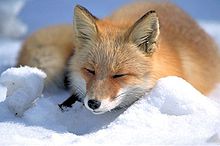Monsters from Japanese Mythology
Monsters from Japanese Mythology
For +Preston Cooper
GASHADOKURO
Solitary, Large, Amorphous
Talons (d10+2 damage) 16 HP 4 armor
Forceful
Special Qualities: Damaged only by magic or magic weapons, Undead
The Gashadokuro are undead that take the form of giant skeletons and are fifteen times taller than an average person, said to be created from the amassed bones of people who died of starvation or in battle, without being buried. These monsters roam after midnight, grabbing lone travelers and biting off their heads to drink their spraying blood. There is a way to know of their approach, as the victim would hear the sound of loud ringing in the ear. The Gashadokuro are said to possess the powers of indestructibility; though Shinto charms are said to ward them off. Instinct: Consume the Living
• Hide from the Sun
• Haunt battlefields
• Patrol unholy graves
JUBOKKO
Large, Stealthy, Amorphous
Blood Drain (d6 damage) 14 HP 2 armor
Near
Special Qualities: Undead, Leaves act as bandages
According to Japanese folklore, it appears in former battlefields where many people have died, and its appearance does not differ that much from ordinary trees. Since it becomes an undead tree by sucking up large quantities of blood from the dead, it lives on human blood. When a human being happens to pass by, it supposedly captures the victim and, changing its branches into the shape of a tube, sucks the blood out of the victim. A Jubokko that sucks life out of human beings in such a way is said to always maintain a fresh appearance. When a Jubokko is cut, blood trickles out. It is said that a Jubokko’s leaves could heal and decontaminate an injured person. Instinct: Drain the living
• Consume Life
• Ambush
• Haunt
KAPPA
Small, Stealthy, Intelligent
(d8 damage) 3 HP 2 armor
Close
Special Qualities: Aquatic
The kappa is typically depicted as roughly humanoid in form and about the size of a child. Its scaly reptilian skin ranges in color from green to yellow or blue. Kappa supposedly inhabits the ponds and rivers of Japan, and has various features to aid them in this environment, such as webbed hands and feet. They are sometimes said to smell like fish and they can swim like them. The expression kappa no kawa nagare (“a kappa drowning in a river”) conveys the idea that even experts make mistakes. Although their appearance varies from region to region, the most consistent features are a beak, a shell, and a plate (sara), a flat hairless region on the top of the head that is always wet, and that is regarded as the source of the kappa’s power. Kappas are usually seen as mischievous troublemakers or trickster figures. Their pranks range from the relatively innocent, such as looking up women’s kimonos, to the malevolent, such as drowning people and animals, kidnaps children, raping women and at times eating human flesh. Folk beliefs claim the cucumber as their traditional favorite meal. Kappa may also be related to the Kelpie of Scotland and the Neck of Scandinavia. Like the Japanese description of the beast, in Scandinavian lore this beast is infamous for kidnapping and drowning people as well as horses. The Siyokoy of the Philippine islands is also known for kidnapping children by the water’s edge. Instinct:Harm
• Mislead
• Drown innocents
• Devour children
ONI
Solitary, Large
Iron Club Smash (b[2d10] damage) 16 HP 0 armor
Near
Special Qualities: Repelled by holly and monkey statutes
Oni (鬼) are a kind of yōkai, or supernatural ogre, or trolls in Japanese folklore. They are popular characters in Japanese art, literature, and theatre. Depictions of oni vary widely but usually portray them as hideous, gigantic ogre-like creatures with sharp claws, wild hair, and two long horns growing from their heads. They are humanoid for the most part, but occasionally, they are shown with unnatural features such as odd numbers of eyes or extra fingers and toes. Their skin may be any number of colors, but red and blue are particularly common. They are often depicted wearing tiger-skin loincloths and carrying iron clubs called kanabō (金棒). This image leads to the expression “oni with an iron club” (鬼に金棒 oni-ni-kanabō), that is, to be invincible or undefeatable. It can also be used in the sense of “strong beyond strong”, or having one’s natural quality enhanced or supplemented by the use of some tool. In addition to this, it can mean to go overboard, or be unnecessarily strong or powerful. In more recent times, oni have lost some of their original wickedness and sometimes take on a more protective function. Men in oni costumes often lead Japanese parades to ward off any bad luck, for example. Japanese buildings sometimes include oni-faced roof tiles called onigawara (鬼瓦), which are thought to ward away bad luck, much like gargoyles in Western tradition.
Instinct: Smash
• Devour
• Doom
• Destroy
TENGU
Group, Small, Intelligent, Construct
Talons (d8 damage) 6 HP 0 armor
Close
Special Qualities: Cursed Buddhist priests, Flight
Tengu are impish Japanese mountain goblins that play tricks on people, featured in countless folktales and considered purely evil until about the 14th century. They were originally depicted as birdlike, with wings and beaks, though now the beak is often replaced with a comically large nose. They are known to lead people away from Buddhism, tie priests to tall trees and towers, start fires in temples, and kidnap children. Many legends say the tengu were hypocritical priests who must now live the rest of their lives as mountain goblins as punishment. Locals made offerings to the tengu to avoid their mischief, and there are still festivals in Japan dedicated to them today.
Instinct: Subvert Buddhists
• Make Mischief
• Trick
• Mock Buddhism


